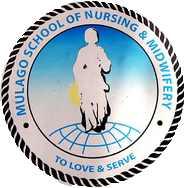Surgery and anaesthesia care are essential to a comprehensive primary health care (PHC) approach and to a people-centred continuum of emergency, critical, and operative care (ECO) services. Surgeons and anaesthetists treat a wide variety of conditions, from cancers and injuries to complications of pregnancy and infections. Billions of people currently lack safe, timely and affordable access to these services. Universal access to these services would save lives, prevent disability and promote economic growth. WHO‘s goal is to strengthen health systems to improve the delivery of comprehensive surgical and anaesthesia care, ensuring access without financial risk, to all people everywhere.
The WHO Surgical Safety Checklist was developed after extensive consultation aiming to decrease errors and adverse events, and increase teamwork and communication in surgery. The 19-item checklist has gone on to show significant reduction in both morbidity and mortality and is now used by a majority of surgical providers around the world.
This kit is intended for use by health care providers who are trained in appropriate management of emergent surgical issues and are acting within their scope of practise. It is designed for use in areas where basic levels of infrastructure exist.
Surgical Care at the District Hospital is a practical resource for individual practitioners and for use in undergraduate and postgraduate programmes, in-service training and continuing medical education programmes. The manual is designed to promote quality surgical care at district (first-referral) level hospitals for patients who cannot be safely transferred to a secondary or tertiary-level hospital. It covers critical aspects of paediatric surgical care, such as fundamentals of surgical practice for the paediatric patient, management of emergencies and paediatric anaesthesia.
As use of the Checklist has become more widespread, specific implementation factors have become more apparent. Factors for successful implementation include:
- Early engagement of staff
- Active leadership and identification of local champions
- Extensive discussion, education and training
- Multidisciplinary involvement
- Coaching
- Ongoing feedback
- Local adaptation
Detailed report on Uganda as a low- and middle-income country activities on establishing emergency and essential surgical care at the district level.

